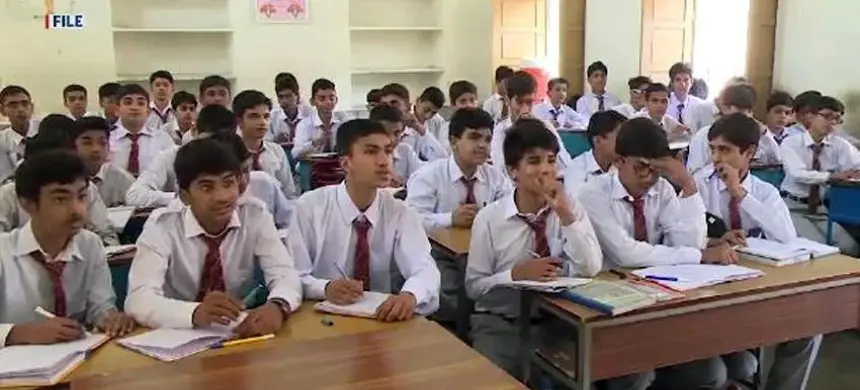Ministry of Education Reveals 26.2 Million Out-of-School Children in Pakistan
On September 9, the Ministry of Education reported that 26.2 million children in Pakistan are not enrolled in school, highlighting a severe educational crisis that demands urgent action.
The data reveals significant disparities in education. Among children aged 5 to 9, 17.74 million are out of school, with 4.97 million boys and 5.81 million girls. The higher number of girls out of school in this age group reflects a troubling inequality in early childhood education, which has long-term consequences for their future learning opportunities.
As children progress to middle school, the situation worsens. Of the 4.93 million children aged 10 to 12 not attending school, 2.11 million are boys, while 2.83 million are girls. This gender disparity indicates that girls face more significant challenges in accessing education during this critical stage.
Read More: Agreement between Ministry of Federal Education & Professional Training
The problem persists at the secondary level, where 4.55 million children are out of school. Among them, 2.31 million are boys and 2.24 million are girls. The dropout rate increases as children get older, pointing to structural barriers that hinder their continued education.
At the higher secondary level, the Ministry reports that 5.95 million students are not in school. Of this group, 2.99 million are male and 2.96 million are female, showing that both genders are almost equally affected at this stage.
The high dropout rates and widespread educational disadvantage reflect deeper systemic issues. Economic factors are central to this crisis, as many families, particularly those in poverty, cannot afford the costs of education, such as tuition fees, uniforms, and supplies. This financial strain forces children to work or stay home to support their families, further deepening educational inequality.
Read More: Punjab boards have announced the 12th class results – Click here to check
The most severe gender disparities occur in early childhood and middle school education. Cultural norms often prioritize boys’ education over girls’, leading to a higher dropout rate for girls. Despite some progress, gender inequality in education remains a significant challenge.
Rural and remote areas suffer from insufficient infrastructure, which severely limits access to education. Many schools lack basic amenities like clean water, proper sanitation, and qualified teachers. These inadequate conditions contribute to the high dropout rates.
The quality of education is another major concern. Many schools have outdated curricula, untrained teachers, and a lack of essential resources. Without access to quality education, students are less likely to stay engaged and complete their schooling.
The educational crisis varies across Pakistan, with children in rural areas facing more significant challenges than those in urban regions. In isolated villages, children often travel long distances to reach the nearest school, and poor transportation infrastructure further discourages regular attendance. Additionally, cultural attitudes in some areas devalue education, particularly for girls, leading to lower enrollment rates.
Various government and non-government initiatives are underway to address these issues. Programs like the Ehsaas Education Stipend and the National School Safety Program aim to improve access to education in the most disadvantaged areas. Non-governmental organizations and international bodies also contribute by building schools and providing scholarships.
However, these efforts alone are not enough. An integrated approach is needed to resolve the educational crisis. This includes increasing financial investment in education, promoting equity, expanding access—especially in rural areas—and enhancing the quality of education.
Addressing these challenges requires significant development in educational infrastructure, including investments in teacher training, school facilities, and learning materials to create a conducive learning environment. Specific initiatives should also focus on promoting girl-child education, raising community awareness, and narrowing gender gaps.
Expanding the network of schools, improving transportation, and introducing mobile schools could improve access for children in remote areas. Meanwhile, updating curricula, investing in teacher development, and adopting modern teaching methods may raise educational standards and help reduce dropout rates.











